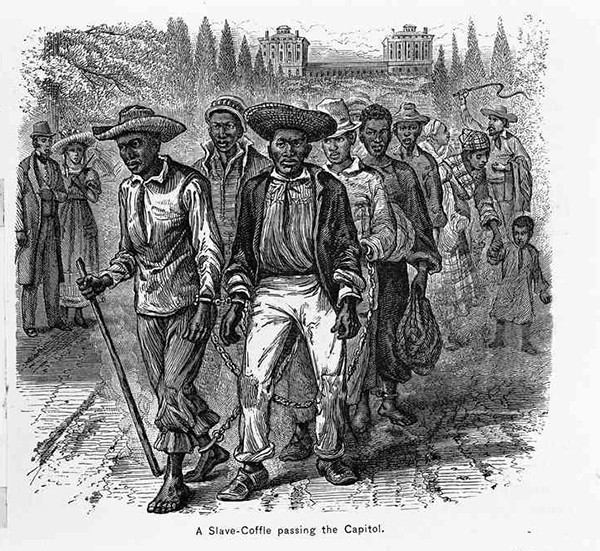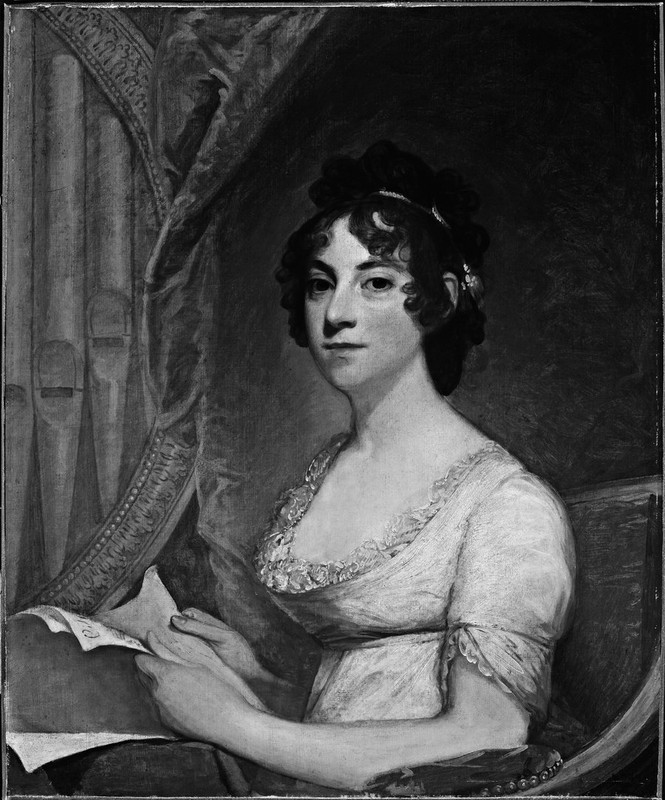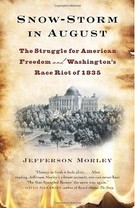Snow Riot, 1835
Introduction
Text-to-speech Audio
At this location on August 4, 1835, nineteen-year-old John Arthur Bowen awoke his owner while holding an axe. Although the young slave did not actually attack his owner, whose home stood near 13th and F Street, reports of her shock spread panic throughout a city that feared a general slave revolt. Because Bowen had recently returned from a meeting of fellow slaves slaves who were learning to read and pushing for the abolition of slavery, many white residents of the city equated his action with the growing agitation against slavery and recent slave rebellions in Virginia.
Although Bowen did not actually assault his owner, Anna Maria Thornton, rumors spread wildly throughout the city that a slave had assaulted a white woman in her bedroom. News that local authorities had arrested Bowen did little to spell the panic and a lynch mob gathered near the jail. After being denied the opportunity to enact vigilante justice against Bowen, members of the mob attacked other Black residents of the city. The mob set fire to Black schools, homes and churches.
The incident is remembered as the "Snow Riot" because the mob also destroyed the Epicurean Eating House-a Black-owned restaurant near 6th and Pennsylvania Avenue that had been the property of former slave Beverly Snow. The mob targeted Snow after rumors spread that he had made several disparaging remarks towards his white neighbors. He may have been lynched, but was able to escape the city and fled to Canada. In the aftermath of the riot, city officials passed new laws restricting the freedoms of Black residents. Even after Bowen's owner dispelled rumors and tried to assure her white neighbors that she had not actually been attacked, city officials pledged to be more vigilant against the threat of violence--not against Black residents who had been attacked and lost their property--but of possible plots by the city's slave population.
Images
This image from the 1830s shows slaves passing by the nation's capitol on their way to be sold at one of the city's slave markets.

After her initial shock, Bowen's owner, Maria Thornton, attempted to dispel rumors that she had been attacked.

Learn more about the riot and early DC in Jefferson Morley's book, Snow-Storm in August: Washington City, Francis Scott Key, and the Forgotten Race Riot of 1835.

Backstory and Context
Text-to-speech Audio
Bowen's decision to wake his master while holding an axe was likely inspired by an evening spent drinking liquor with a few other slaves. During the antebellum period, slaves occasionally performed small acts of rebellion to remind their masters of their potential vulnerability without actually causing physical harm. In the wake of Nat Turner's bloody slave rebellion of 1831, however, white slaveowners in Virginia were on high alert. The potential for Bowen to kill his owner in her sleep, and his decision to demonstrate his potential power over her, threatened the institution of slavery and the racial hierarchy. Because Bowen had also participated in a group of slaves who were learning to read and challenging slavery, white residents responded with anger and acts meant to terrorize other Black residents as a way of reinforcing the current power structure.
Prior to the riot, Bowen's group had adopted the name "The Talking Society" and met under the direction of a local schoolteacher. After the riot, the city passed laws limiting the freedoms of free Black residents and barring slaves from holding meetings.
Historian Jefferson Morley has researched the Snow Riot and discovered the Francis Scott Key, who had recently been appointed by Andrew Jackson as the city's district attorney. Although Key is often regarded as an opponent of slavery for his membership in the American Colonization Society--a group that hoped to end slavery but also hoped to send slaves back to Africa--as the city's attorney he sought the death penalty for Bowen and issued warrants for the arrest of white and Black residents believed to possess abolitionist literature. For those who would like to learn more, please click on the links to Morley's article and book.
Prior to the riot, Bowen's group had adopted the name "The Talking Society" and met under the direction of a local schoolteacher. After the riot, the city passed laws limiting the freedoms of free Black residents and barring slaves from holding meetings.
Historian Jefferson Morley has researched the Snow Riot and discovered the Francis Scott Key, who had recently been appointed by Andrew Jackson as the city's district attorney. Although Key is often regarded as an opponent of slavery for his membership in the American Colonization Society--a group that hoped to end slavery but also hoped to send slaves back to Africa--as the city's attorney he sought the death penalty for Bowen and issued warrants for the arrest of white and Black residents believed to possess abolitionist literature. For those who would like to learn more, please click on the links to Morley's article and book.
Sources
Morley, Jefferson. Snow-Storm in August: Washington City, Francis Scott Key, and the Forgotten Race Riot of 1835. New York, Knopf Doubleday, 2012.
Frederick Herald. "Mobs." Virginia Free Press [Charlestown, West Virginia] 20 Aug. 1835: n.p. 19th Century U.S. Newspapers. Web.
Shiner, M., Sharp, J. G., & United States. (2008). The diary of Michael Shiner relating to the history of the Washington Navy Yard 1813-1865. Washington, D.C: Navy Dept. Library.
